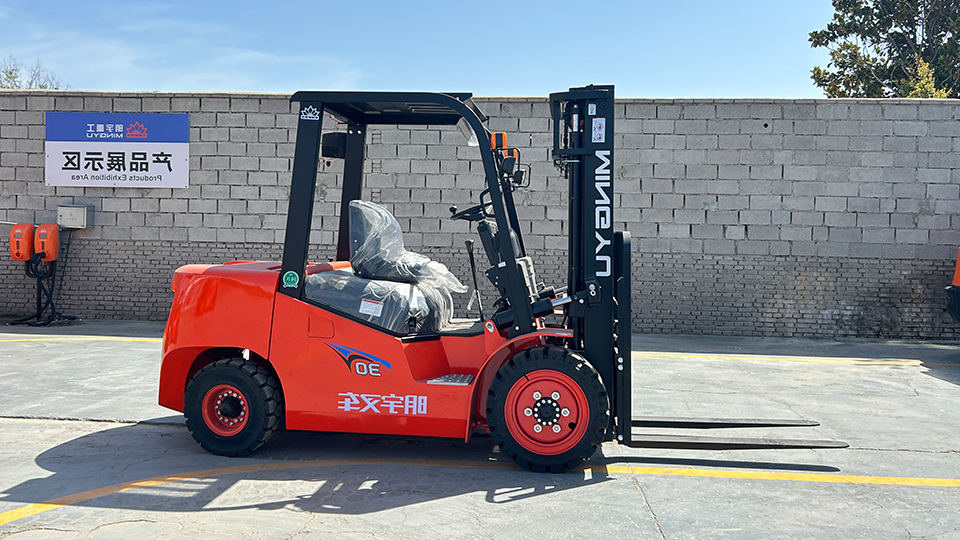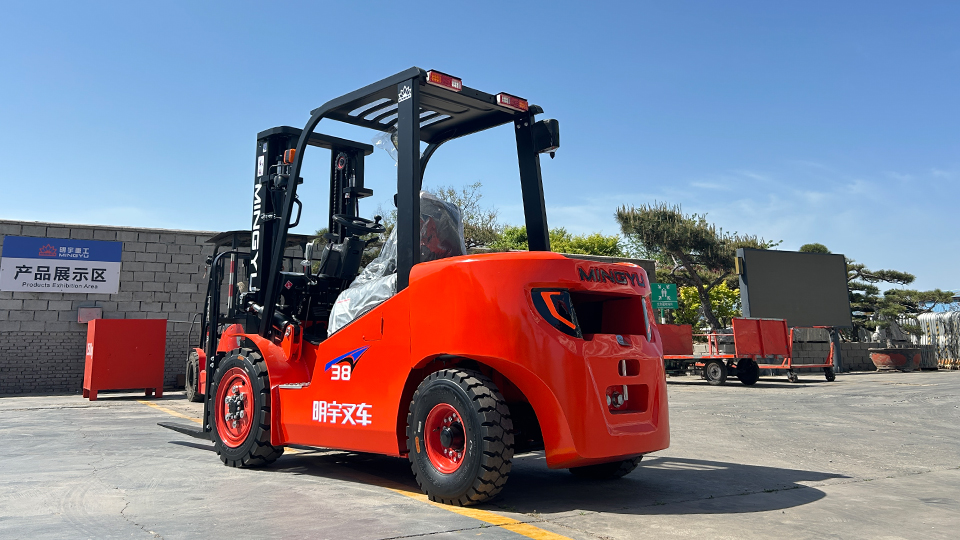
Mastering the Controls: A Technical Guide to Operating Your Toyota Forklift
The modern forklift is a marvel of engineering, transforming material handling operations across countless industries. Toyota, a name synonymous with reliability and innovation, offers a diverse range of forklifts designed for efficiency and safety. However, operating these powerful machines requires more than just turning a key. It demands a thorough understanding of the controls, safety protocols, and operational best practices. This article provides a detailed technical guide to operating a Toyota forklift effectively and safely.
I. Pre-Operation Checks: Ensuring a Safe Start
Before even thinking about starting the engine, a comprehensive pre-operation check is paramount. This routine ensures the forklift is in safe working order and can prevent accidents and equipment damage.
Fluid Levels: Begin by checking all critical fluid levels.
Engine Oil: Verify the oil level using the dipstick. Ensure it falls within the designated "full" and "add" marks. Low oil levels can lead to engine damage due to inadequate lubrication.
Hydraulic Fluid: Inspect the hydraulic fluid reservoir. This fluid powers the lifting and tilting mechanisms. Low levels can result in sluggish or unresponsive controls.
Coolant: Check the coolant level in the radiator or expansion tank. Proper coolant levels are essential for maintaining engine temperature and preventing overheating.
Fuel: Ensure an adequate fuel supply for the intended operation. Running out of fuel can cause delays and potentially damage the fuel system.
Brake Fluid: Inspect the brake fluid reservoir. Low levels can indicate a leak in the braking system, a critical safety concern.
Tires and Wheels: Examine the tires for proper inflation pressure, cuts, bulges, or excessive wear. Uneven tire pressure can affect stability and handling. Check the wheel nuts for tightness. Loose nuts can lead to wheel detachment, a catastrophic failure.
Forks and Mast: Carefully inspect the forks for any signs of bending, cracking, or damage. Ensure they are securely mounted and that the locking pins are in place. Examine the mast and carriage for any obstructions, damage, or loose components. Check the condition of the lift chains or cables, ensuring they are properly lubricated and show no signs of wear or fraying.
Safety Equipment: Verify the functionality of all safety equipment.
Seatbelt: Ensure the seatbelt is present and in good working order. It is crucial for operator safety in case of a tip-over.
Overhead Guard: Confirm the overhead guard is securely in place and undamaged. It provides protection from falling objects.
Lights and Horn: Test all lights (headlights, taillights, warning lights) and the horn to ensure they are functioning correctly. These are essential for visibility and signaling.
Warning Labels and Decals: Ensure all warning labels and operating instructions are present and legible.
Controls: Briefly check the functionality of all controls (lift, tilt, travel, brakes, steering) without starting the engine. This provides a preliminary check for any obvious mechanical issues.
II. Starting and Basic Operation: Bringing the Machine to Life

Once the pre-operation checks are complete, you can proceed with starting the forklift.
Operator Restraint: Always fasten your seatbelt before starting the engine.
Neutral Position: Ensure the transmission is in neutral or park, depending on the model. This prevents the forklift from moving unexpectedly upon starting.
Ignition: Insert the key into the ignition and turn it to the "on" position. Allow the indicator lights to illuminate, confirming the electrical system is active.
Starting the Engine: Turn the key to the "start" position. Once the engine starts, release the key. Avoid prolonged cranking, which can damage the starter motor.
Initial Checks: After the engine starts, listen for any unusual noises. Monitor the instrument panel for any warning lights that remain illuminated. Allow the engine to warm up slightly before engaging any hydraulic functions.
Forward and Reverse Travel:
Direction Lever: Locate the forward/reverse direction control lever. This is typically located on the steering column or near the seat.
Selecting Direction: Ensure the area is clear of obstructions before selecting a direction. Move the lever to the desired position (forward or reverse).
Accelerator Pedal: Gently depress the accelerator pedal to move the forklift. The speed is proportional to the pressure applied to the pedal. Smooth and gradual acceleration is recommended.
Braking: To stop, release the accelerator pedal and gently depress the brake pedal. Avoid sudden or harsh braking, which can cause the load to shift or the forklift to become unstable.
Steering: Toyota forklifts typically utilize either a steering wheel or a tiller arm for steering.
Steering Wheel: Operate the steering wheel as you would in a car. Be mindful that the rear wheels steer on most forklifts, resulting in a tighter turning radius but requiring wider turns to avoid swinging the rear end.
Tiller Arm: For stand-up rider forklifts, the tiller arm controls both steering and some hydraulic functions. Move the tiller arm left or right to steer. Exercise caution as the steering response can be sensitive.
III. Mastering Load Handling: Lifting, Lowering, and Tilting

The primary function of a forklift is to lift, move, and lower loads safely and efficiently. Understanding the hydraulic controls is crucial for this.
Lift Control: This lever (or joystick) controls the vertical movement of the forks and the load.
Raising: Gently push or pull the lever in the designated direction to raise the forks. Lift smoothly and avoid jerky movements.
Lowering: Carefully move the lever in the opposite direction to lower the forks. Control the descent to prevent the load from dropping abruptly.
Tilt Control: This lever (or joystick) controls the forward and backward tilt of the mast.
Tilting Back: Tilting the load back slightly helps to stabilize it during transport. This is generally recommended when moving loads.
Tilting Forward: Tilting forward is typically used for carefully placing or retrieving loads. Exercise extreme caution when tilting forward with an elevated load, as it can significantly reduce stability.
Auxiliary Hydraulic Functions (if equipped): Some Toyota forklifts may have additional hydraulic controls for functions such as side-shifting the forks or operating attachments. Understand the specific function and operation of these controls before use.
IV. Safe Operating Practices: A Culture of Prevention
Safe operation is paramount to prevent accidents, injuries, and damage. Adhere to the following best practices:
Load Capacity: Never exceed the forklift's rated load capacity, which is clearly marked on the data plate. Overloading can lead to instability, loss of control, and structural failure. Understand how the load center affects capacity.
Load Stability: Ensure the load is stable and evenly distributed on the forks. Use pallets or appropriate lifting devices. Secure loose items to prevent them from falling.
Traveling with a Load:
Keep the Load Low: Transport loads with the forks as low to the ground as safely possible (typically 4-6 inches). This lowers the center of gravity and improves stability.
Avoid Sudden Movements: Accelerate, brake, and turn smoothly and gradually.
Observe Speed Limits: Adhere to any posted speed limits within the work area.
Maintain a Safe Following Distance: Allow sufficient distance between your forklift and other vehicles or pedestrians.
Be Aware of Surroundings: Constantly scan your environment for obstacles, pedestrians, and other hazards. Use your horn to warn others of your presence.
Stacking and Unstacking:
Approach Straight: Align the forklift squarely with the stacking area.
Level the Forks: Ensure the forks are level before entering or withdrawing from a pallet.
Lift Smoothly: Raise the load vertically and avoid tilting forward excessively at height.
Lower Carefully: Lower the load smoothly and ensure it is properly seated before withdrawing the forks.
Operating on Inclines: Exercise extreme caution when operating on ramps or inclines.
Travel Straight Up or Down: Avoid turning on inclines.
Load Facing Uphill: When traveling uphill with a load, keep the load facing uphill for better stability. Travel downhill with the load trailing.
Never Exceed Maximum Grade: Be aware of the forklift's maximum allowable grade.
Pedestrian Safety: Pedestrians always have the right-of-way. Be vigilant and yield to pedestrians. Make eye contact and ensure they are aware of your presence before proceeding.
Fueling and Charging: Follow proper procedures when refueling internal combustion engine forklifts or charging electric forklifts. Ensure adequate ventilation and avoid open flames during refueling. Follow the manufacturer's instructions for charging electric forklifts.
Parking: When parking the forklift, lower the forks completely to the ground, set the parking brake, and turn off the engine. Remove the key to prevent unauthorized use. Park in designated areas, ensuring the forklift does not obstruct walkways or exits.
V. Understanding the Instrument Panel and Controls: Deciphering the Feedback
The instrument panel provides vital information about the forklift's operational status. Familiarize yourself with the meaning of each indicator light and gauge. Common indicators include:
Engine Temperature: Indicates the engine coolant temperature. Overheating can cause significant damage.
Fuel Level: Shows the amount of fuel remaining.
Oil Pressure: Indicates the engine oil pressure. Low pressure can signal a serious problem.
Battery Discharge Indicator (Electric Forklifts): Displays the remaining battery charge.
Hour Meter: Records the total operating hours, useful for scheduling maintenance.
Warning Lights: Various warning lights may illuminate to indicate specific issues, such as low fluid levels, brake problems, or engine malfunctions. Consult the operator's manual for the meaning of each warning light.
VI. Forklift Attachments: Expanding Capabilities
Toyota offers a variety of attachments that can be added to forklifts to handle specialized tasks. These attachments alter the forklift's operational characteristics and require specific training. Common attachments include:
Sideshifters: Allow lateral movement of the forks for precise load placement.
Paper Roll Clamps: Designed for handling large rolls of paper.
Carton Clamps: Used for handling unpalletized cartons.
Rotating Forks: Allow the operator to rotate the load.
Push/Pull Attachments: Used for handling slip sheets instead of pallets.
Operating a forklift with an attachment requires thorough understanding of the attachment's functionality, its effect on the forklift's capacity and stability, and specific operating procedures. Always consult the attachment's manual and receive proper training before using any forklift attachment.
VII. Maintenance and Inspections: Ensuring Longevity and Safety
Regular maintenance and inspections are crucial for keeping your Toyota forklift operating safely and efficiently. Operators play a vital role in identifying potential issues.
Daily Inspections: As outlined in the pre-operation checks, daily inspections are the first line of defense against potential problems. Report any defects or malfunctions immediately.
Scheduled Maintenance: Adhere to the manufacturer's recommended maintenance schedule. This includes regular servicing of the engine, hydraulics, brakes, and other critical components by qualified technicians.
Reporting Issues: Promptly report any unusual noises, vibrations, control malfunctions, or other concerns to the appropriate personnel. Addressing minor issues early can prevent more significant and costly repairs down the line.
VIII. Conclusion: Responsibility and Continuous Learning
Operating a Toyota forklift is a significant responsibility. It requires a combination of technical knowledge, practical skills, and a strong commitment to safety. This guide provides a comprehensive overview of the essential aspects of forklift operation. However, it is crucial to remember that this information should be supplemented by thorough hands-on training from qualified instructors and a thorough understanding of the specific Toyota forklift model you are operating and your workplace's safety regulations. Continuous learning and adherence to best practices are essential for ensuring safe and efficient material handling operations. Always prioritize safety, follow procedures diligently, and never hesitate to ask questions when in doubt. By mastering the controls and embracing a culture of safety, you can become a proficient and responsible Toyota forklift operator.
Name: selena
Mobile:+86-13176910558
Tel:+86-0535-2090977
Whatsapp:8613181602336
Email:vip@mingyuforklift.com
Add:Xiaqiu Town, Laizhou, Yantai City, Shandong Province, China